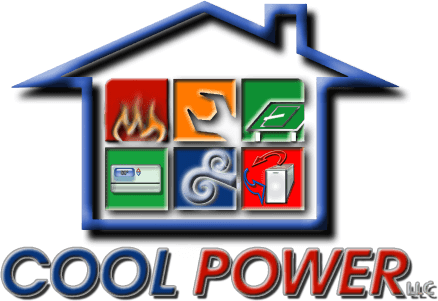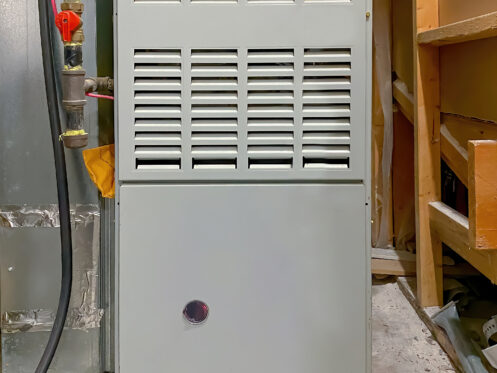Modern gas furnaces are quite complex and rely on a large number of different components working in tandem. If even one component fails or isn’t working properly, it can prevent your furnace from running, cause it to shut down early or limit its effectiveness. Although most furnace issues will need to be diagnosed by a technician, here are some of the common problems and how they can be fixed.
Overheating
Furnaces can easily overheat in certain situations. This is why all modern furnaces have a component known as a high-temperature limit switch that monitors the temperature of the heat exchanger. Any time the temperature exceeds the set limit (usually around 160 degrees Fahrenheit), the switch will immediately trigger the gas valve to close so that the burners go out. On some furnaces, the limit switch will force the furnace into a hard shutdown if it triggers too many times, which means the furnace won’t run until it has been serviced and the control board is reset.
If you find that your furnace frequently shuts off before your home is fully heated to the desired temperature, it may indicate that it keeps overheating. If your furnace smells as though it’s burning, it’s a fairly certain sign that it is either overheating or has an electrical short. Any time you suspect your furnace shut down due to overheating, you should check the air filter and replace it if it’s dirty. You also want to check that all of the vents in every room are open.
Furnaces will typically only ever overheat if the airflow coming into them is restricted. A clogged air filter is usually the main culprit in this regard, as it makes it much more difficult for the blower to pull air in. Having too many vents closed can also restrict airflow, as closed vents increase the static pressure or airflow resistance in the duct system.
If the blower is starting to wear out or its housing is coated in a thick layer of dust, it may also not be able to move sufficient air and the furnace could overheat. These last issues are something you can easily prevent with annual furnace maintenance, as this includes cleaning and testing the blower. Replacing the air filter regularly and keeping all of your vents open should also help prevent your furnace from overheating.
Overheating is absolutely not an issue you should ignore. If your furnace regularly overheats, it can lead to the heat exchanger cracking and allowing carbon monoxide to leak out into your ductwork. Unfortunately, a cracked heat exchanger is usually fatal since replacing it normally costs around the same as replacing the entire furnace.
Faulty or Dirty Flame Sensor
Any newer furnace with an electronic igniter has a flame sensor that monitors if the burners are lit. It does this by using an electrical current to detect the flames coming off the burners. Since flame sensors are subjected to intense heat, they sometimes only last for around five years. If you don’t have your furnace serviced yearly, the sensor can also get too dirty to detect the flames.
A failed flame sensor is usually one of the easiest furnace issues to spot. If the flame sensor isn’t working, the burners will light and then go out in only a few seconds. If the flame sensor is dirty or starting to wear out, it may still work intermittently. This can lead to the furnace occasionally shutting off before completing a full heating cycle and then turning on again almost immediately. If you notice these issues, you will need a technician to inspect the flame sensor and test it with a voltmeter. A failed flame sensor will obviously need to be replaced, but the technician may also be able to fix the issue simply by cleaning the sensor.
Worn-Out Electronic Igniter
As with the flame sensor, the electronic igniter in a furnace is often one of the first components to fail since it is constantly exposed to extreme heat when the furnace runs. A worn-out electronic igniter is also an easy issue to identify. If the igniter is bad, you will hear gas flowing to the burners for a few seconds, but they won’t light. The flame sensor will then trigger the gas valve to close. In this situation, the furnace may continue trying to light every minute or so. If your furnace has a direct-spark igniter, you will also often hear it clicking as it tries and fails to light the burners. If you suspect the igniter in your furnace is bad, a technician will be able to easily test it and replace it if necessary.
The igniter can also sometimes malfunction and draw too much electricity, causing the circuit breaker to frequently trip. If your furnace ever keeps tripping the breaker, you should always shut it off until you can get it inspected. If the igniter or any other components keep overloading the circuit, it could cause major electrical damage or potentially even lead to the furnace catching fire.
Dirty or Clogged Furnace Burners
If your furnace isn’t serviced every fall, you will eventually start having issues with the gas ports on the burners clogging up. Dirty or clogged burners can cause an ignition delay in which the burners don’t light immediately. This can produce a dangerous fireball once the gas finally lights, as the delay will lead to gas starting to fill up the combustion chamber. An ignition delay will usually cause your furnace to make a loud booming noise when it lights, and this is a sure sign that you need to have a technician clean the burners.
If the burners are dirty, the gas also won’t fully combust or burn cleanly. If the gas doesn’t fully combust, the burners will produce much less heat and it will take much longer for the furnace to warm your home. When the gas burns cleanly and fully combusts, the burner flames will be bright blue and steady. Yellow or orange flickering flames indicate incomplete combustion, and they are another sign that you need to have the burners cleaned.
Cracked Heat Exchanger
If your furnace ever starts to make a rattling sound, you need to shut it off and have it inspected immediately. Although the rattling sound could simply be due to a loose component, it can also indicate that there is a crack in the heat exchanger. Again, a cracked heat exchanger is the worst issue a furnace can have, as it can put you at risk for fatal carbon monoxide poisoning. This is one reason why it is essential that you have a carbon monoxide detector around 15 feet away from your furnace and additional detectors on every floor and near every bedroom or sleeping area.
At Cool Power LLC, we’ve been providing expert furnace repair and maintenance services in Ronkonkoma and the surrounding areas since 1976. Our certified technicians can service any make and model of residential or commercial furnace, and they also specialize in furnace installation as well as AC installation, maintenance, and repairs. If you’re experiencing any issues with the furnace in your home or business, contact us today to schedule an inspection.


